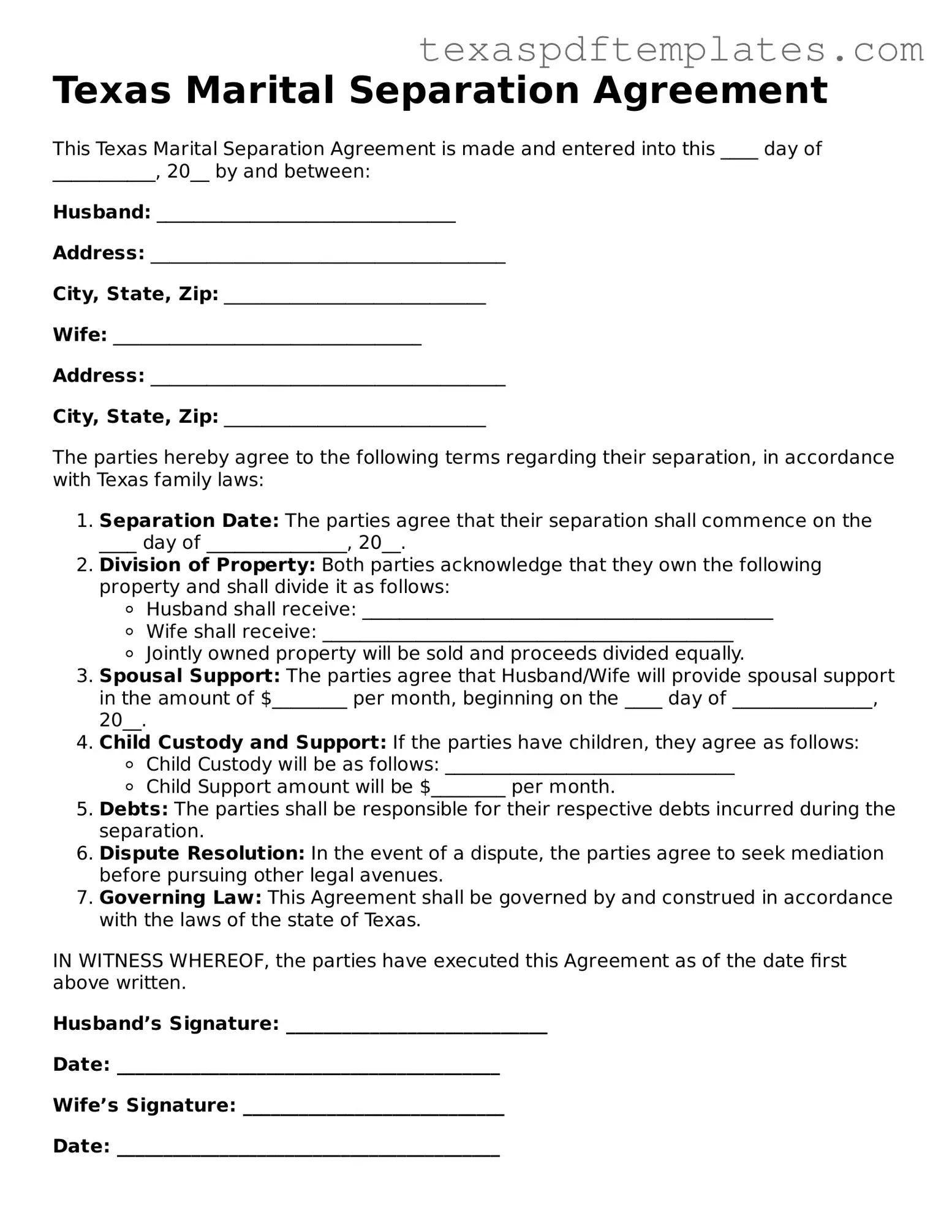Texas Marital Separation Agreement
This Texas Marital Separation Agreement is made and entered into this ____ day of ___________, 20__ by and between:
Husband: ________________________________
Address: ______________________________________
City, State, Zip: ____________________________
Wife: _________________________________
Address: ______________________________________
City, State, Zip: ____________________________
The parties hereby agree to the following terms regarding their separation, in accordance with Texas family laws:
- Separation Date: The parties agree that their separation shall commence on the ____ day of _______________, 20__.
- Division of Property: Both parties acknowledge that they own the following property and shall divide it as follows:
- Husband shall receive: ____________________________________________
- Wife shall receive: ____________________________________________
- Jointly owned property will be sold and proceeds divided equally.
- Spousal Support: The parties agree that Husband/Wife will provide spousal support in the amount of $________ per month, beginning on the ____ day of _______________, 20__.
- Child Custody and Support: If the parties have children, they agree as follows:
- Child Custody will be as follows: _______________________________
- Child Support amount will be $________ per month.
- Debts: The parties shall be responsible for their respective debts incurred during the separation.
- Dispute Resolution: In the event of a dispute, the parties agree to seek mediation before pursuing other legal avenues.
- Governing Law: This Agreement shall be governed by and construed in accordance with the laws of the state of Texas.
IN WITNESS WHEREOF, the parties have executed this Agreement as of the date first above written.
Husband’s Signature: ____________________________
Date: _________________________________________
Wife’s Signature: ____________________________
Date: _________________________________________
This Agreement reflects the understanding and intention of the parties. Both parties should seek independent legal advice before signing this document to ensure their rights are protected.
